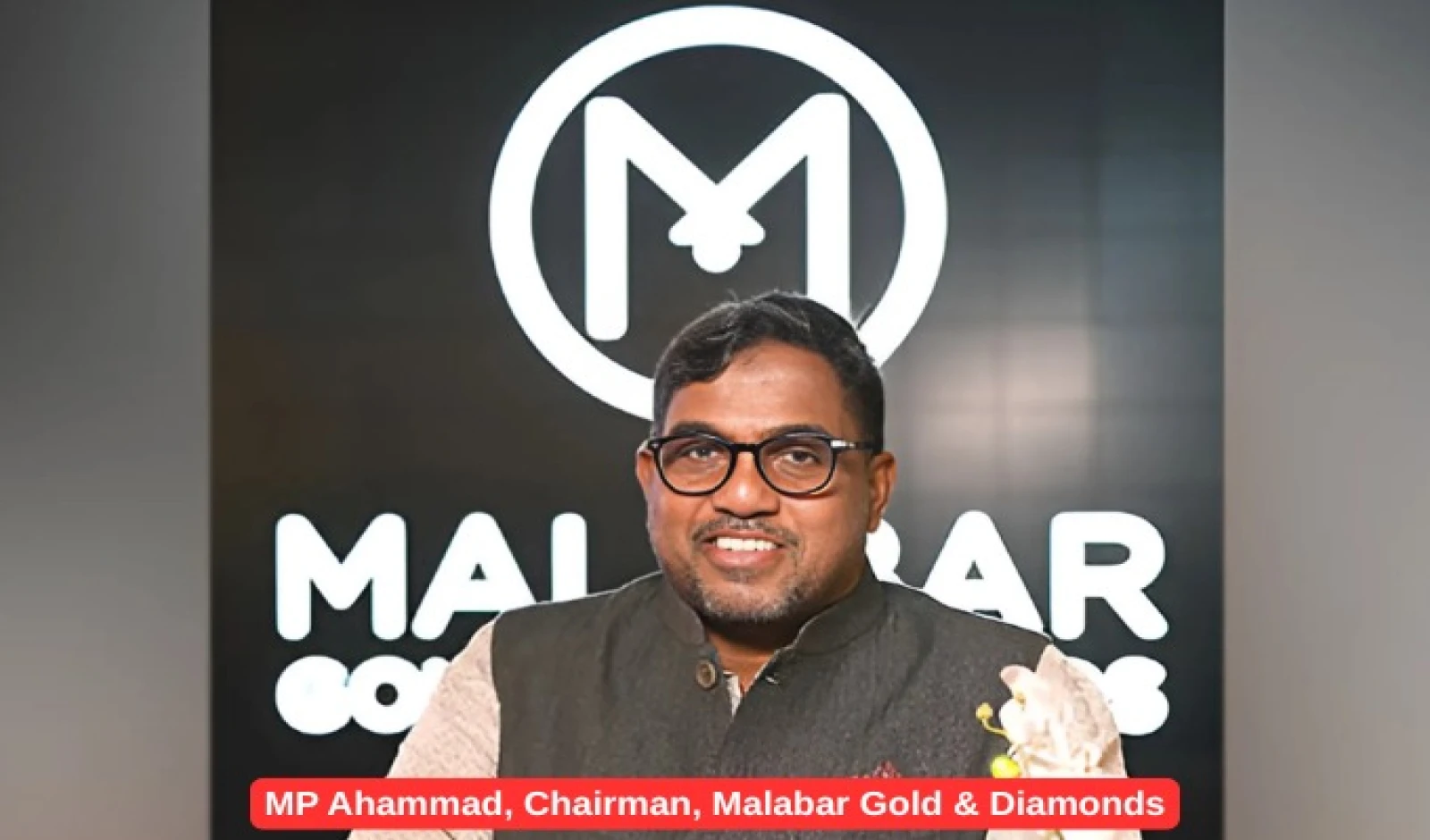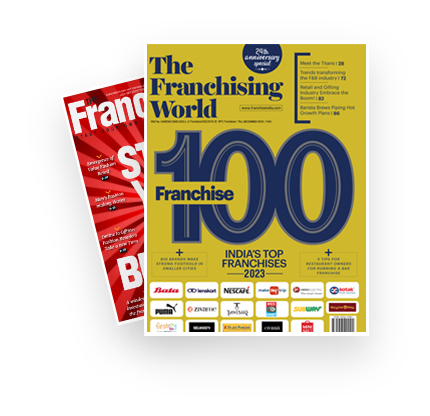
- Tell us a bit about your entrepreneurial journey.
I come from a family of merchants and landlords, so entrepreneurship was a natural path for me. My first venture began in 1981, at the age of 17, when I started an agro-products business trading cardamom, pepper, and coconuts. While the experience was educational, the business struggled due to delayed payments, slim margins, and high risk.
A key turning point was our association with a company called Cococare. We supplied them raw materials at a time when they were going through financial difficulty. Despite their struggles, Unilever later acquired Cococare for over Rs. 22 crores. That incident made me realize the immense value of brand equity. I decided then that my next venture would focus on building a strong, reputable brand—albeit in a different sector.
- When and how did Malabar Gold & Diamonds begin?
While looking for business opportunities beyond agro-trading, I saw great potential in the jewellery retail sector, which at the time was highly unorganised with no standardisation in purity or quality. I decided to take the plunge and opened a modest 200 sq. ft. showroom in Kozhikode in 1993, under the name Malabar Gold & Diamonds, with an initial investment of Rs. 50 lakhs raised from family and friends.
The name "Malabar" pays homage to the region’s rich cultural legacy. The idea was partly inspired by the Malabar Mahotsavam, a festival initiated by then District Collector Mr. Amitabh Kant, who launched several initiatives under the "Malabar" name to celebrate the area’s heritage.
We launched during a transformative time in India’s economy—right after the liberalisation reforms of the early 1990s. Our goal was to create a structured, customer-centric jewellery brand rooted in transparency, trust, and quality.
- How has the experience been so far?
It has been an extraordinary journey. From a small showroom in Kozhikode, we've grown into the sixth-largest jewellery retailer in the world. Today, we have over 25,000 employees and more than 400 showrooms across 13 countries.
In 1997, we became one of the first jewellers in India to retail BIS hallmarked jewellery, helping standardise purity. In 2001, we opened our first international showroom in the Gulf. By 2011, with our 50th showroom in Riyadh, our sales had crossed Rs. 12,000 crores. In 2013, with 103 outlets across seven countries, we were ranked the third-largest jewellery retailer globally by turnover.
The growth continued. In 2016, our 150th showroom opened in Belgaum, Karnataka. The following year, our 200th showroom opened in Dubai. In 2018, we launched 11 showrooms across six countries in a single day. In 2019, we entered the U.S. with our 250th showroom in Chicago. In 2020, we introduced the One India One Gold Rate initiative, ensuring uniform gold pricing across all Indian showrooms. We now operate 14 manufacturing units across India and the GCC.
From just seven people in 1993, we've grown into a brand with over 4600 investors, and we now look forward to entering the New Zealand market.
- What is your management mantra?
Shared growth is the cornerstone of our philosophy. Our people and investors are our greatest assets. We strive to align them with a unified vision so they can drive the brand forward. Empowerment and trust create a ripple effect that fuels sustained success.
- Where do you see Malabar Gold & Diamonds five years from now?
Our focus remains on strategic global expansion and strengthening our brand’s core values—trust, quality, and customer-centricity. Over the next five years, we aim to establish ourselves as the world’s number one jewellery and luxury brand.
- How has the jewellery market evolved in the last five years—and what changes do you foresee?
The market has expanded significantly, both in scale and customer expectations. Millennials and Gen Z now prefer lightweight, wearable, and personalized jewellery. Ethical sourcing and sustainability are becoming major factors in purchasing decisions—by 2025, sustainable products could account for 30% of global jewellery sales. The rise of digital platforms has also transformed how consumers discover and buy jewellery.
Over the next five years, we expect a deeper integration of sustainability, personalisation, and technology into jewellery retailing.
- How is technology driving Malabar’s growth?
We’ve partnered with Accenture to build an AI-powered, cloud-enabled digital platform aimed at improving operational efficiency, customer engagement, and employee productivity. This system enables data-driven decision-making and helps us stay agile in responding to market trends.
- How do you plan to serve tier-II and tier-III cities?
These markets present tremendous potential, especially in states like Karnataka, Telangana, and Haryana. Rising disposable incomes and growing awareness of branded jewellery are driving demand. Consumers here are shifting from investment-only mindsets to trend-driven buying.
Over 56% of our showrooms are already in non-metro locations. We’re focused on enhancing accessibility to world-class retail experiences in smaller towns while adapting designs to suit local tastes. Lower rentals, loyal customer bases, and unmet demand for transparency make these markets ideal for long-term growth.
- Do Indian consumers prefer gold or diamond jewellery—and why?
Gold continues to dominate due to its cultural and emotional significance. It symbolizes security and status and remains a preferred investment, especially during uncertain times. Demand is largely driven by weddings, festivals, gifting, and increasing disposable incomes, particularly in tier-II and tier-III cities.
- What key trends are shaping the precious jewellery market today?
Young consumers are influencing trends through their connection to cinema, fashion, and social media. Wearability has become a major focus, leading to a surge in demand for lightweight, everyday jewellery. We’re investing in design and merchandising to offer collections that are both aspirational and affordable.
Technology is another major driver. Virtual try-ons and omnichannel retailing are transforming the shopping experience. Men’s jewellery is also emerging as a significant category, reflected in our exclusive Legendz collection.
- What role does franchising play in your business model?
Our franchising model is quite different from conventional systems. In typical franchise arrangements, the franchisee manages operations and pays a royalty based on sales. With Malabar, we manage all operations directly. Our franchisees are investors who share in the profits, not just the turnover. Every franchise store is essentially run like our own.
- How do you support your franchise investors?
We provide end-to-end support: from showroom design and staff training to marketing, inventory management, and business intelligence. This robust backend ensures consistency in customer experience and operational excellence.
- What do you look for in a franchise partner?
We seek partners who align with our values—integrity, a customer-first mindset, and a long-term approach to business. Ideal franchisees understand the jewellery market, are community-focused, and bring local insights to help grow the brand responsibly.

